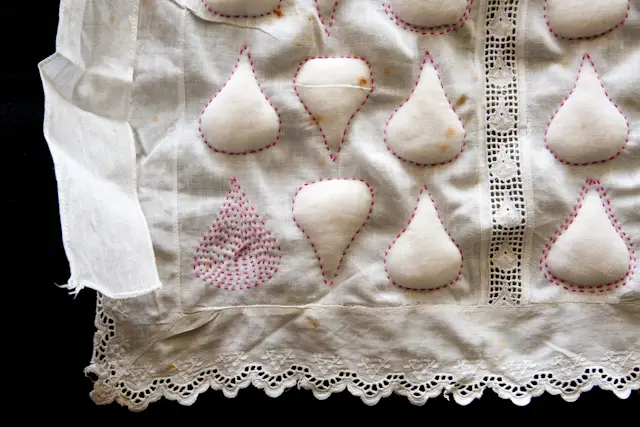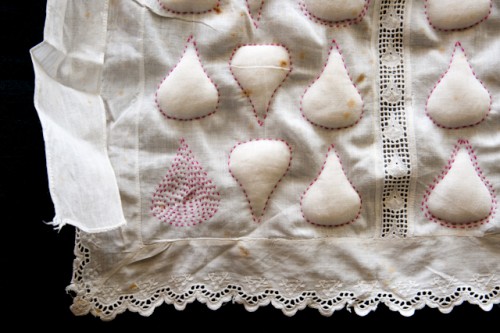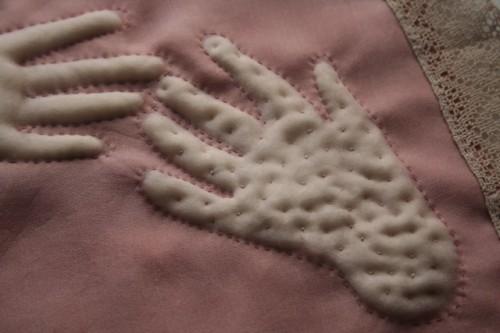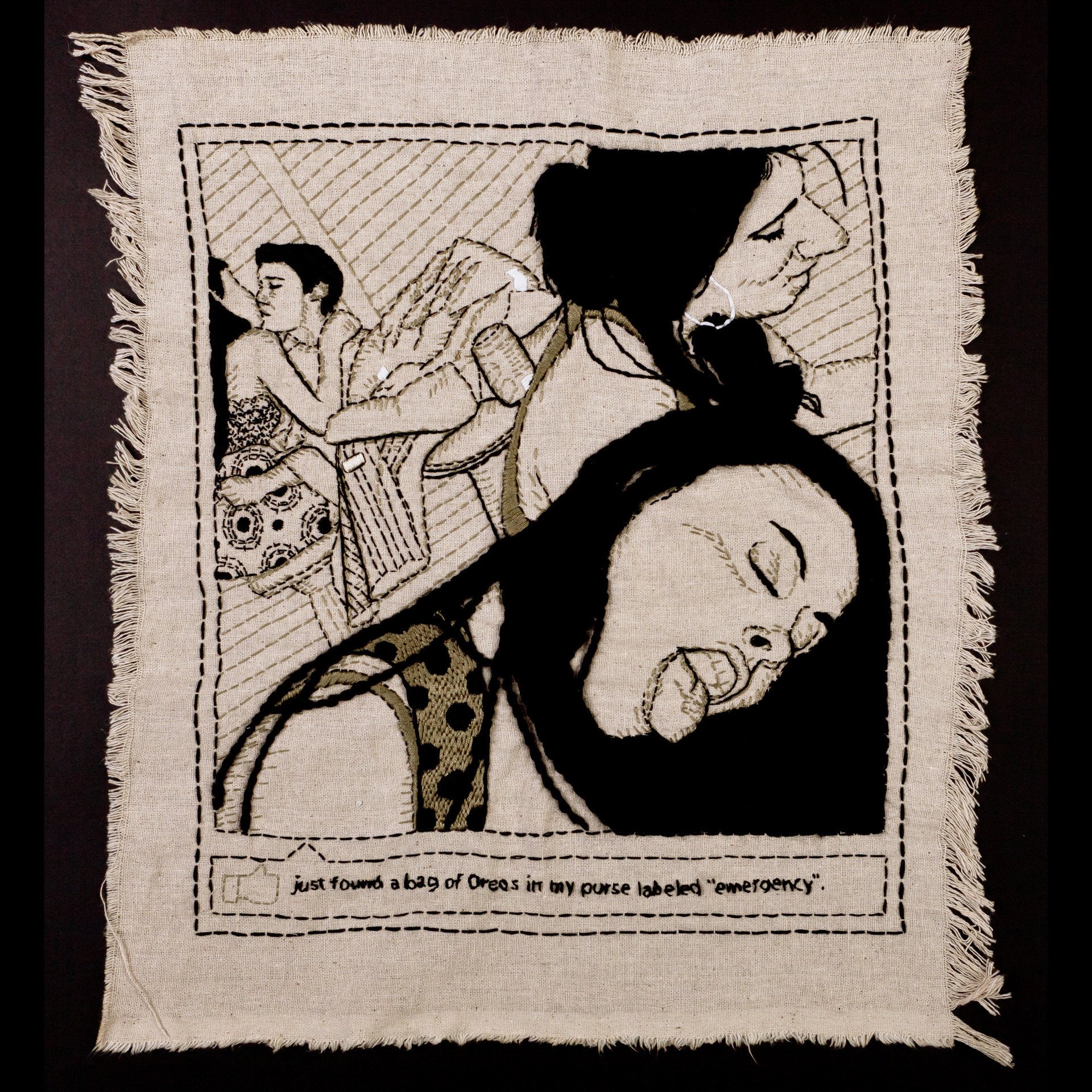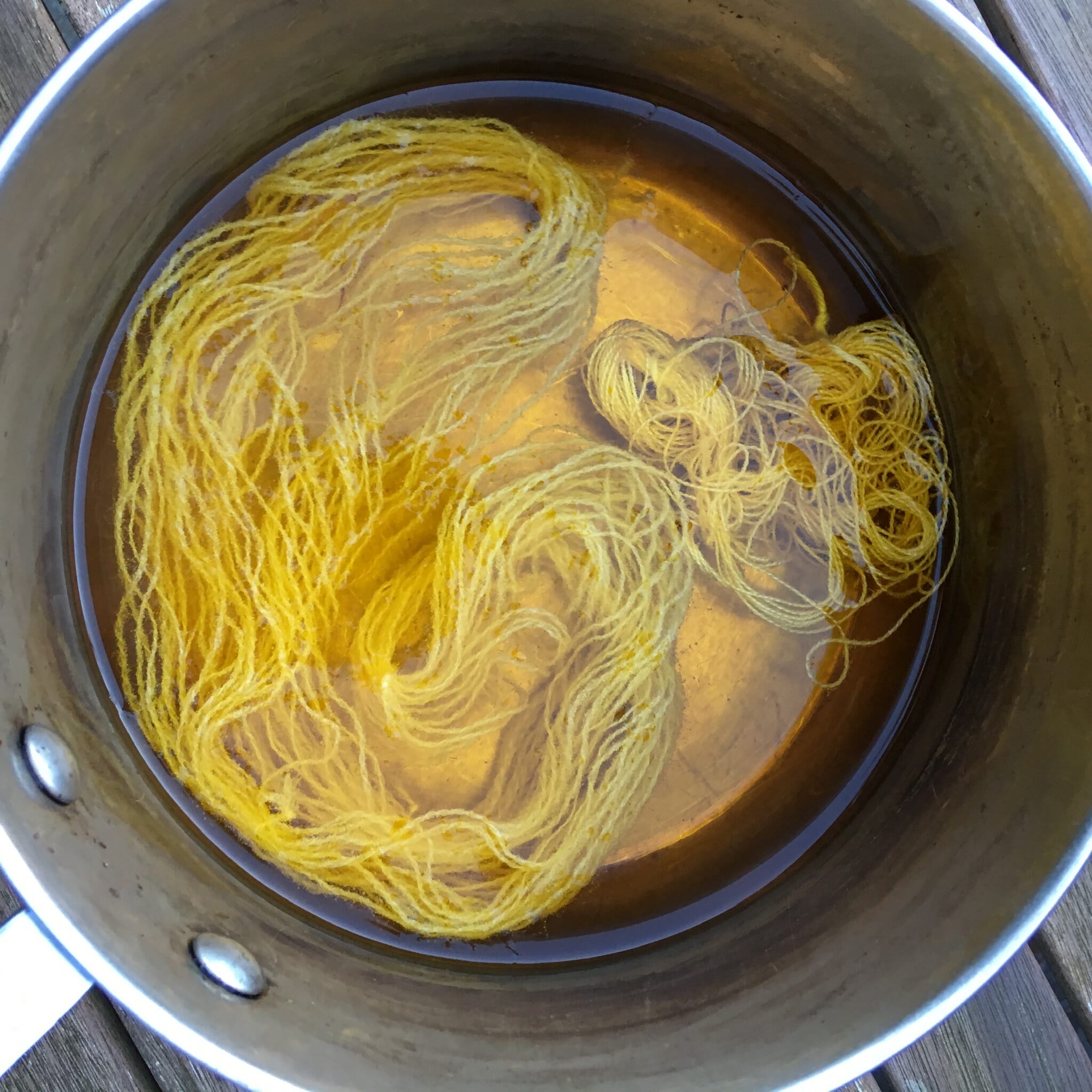Trapunto Quilting uses two layers of fabric where stuffing is strategically placed and confined with stitches to create textural forms. It is also known as Italian or stuffed quilting and cotton cord is a common material used for the stuffing.
Trapunto is an old and rather under-appreciated technique which I am a huge fan of, so let’s dig a little deeper and explore the history of it.
Unlike ‘normal’ quilting, where two layers of fabric have a layer of wadding between them and are stitched through all the layers, Trapunto uses two layers of fabric and the stuffing is only placed in defined areas, after all the stitching is complete. Narrow lines are filled with cord while larger areas are filled with cotton or wool traditionally and often polyester stuffing these days. The old French version of stuffed quilting called Boutis is always worked in white and all shapes are stuffed with a soft, cotton cord.
The oldest known quilt still surviving dates from the 14th century (1360-1400) and is made using stuffed quilting. This gorgeous, minimalist white linen quilt, called the Tristan Quilt, was made in Sicily, presumably for an extremely wealthy client. Textiles were as valuable, if not more valuable than gold in the middle ages, and skilled craftsmen were in demand. This, like many other luxury textiles such as Tapestry and embroidery, were made in specialist professional workshops staffed by men and women, and not by noble women sitting around in castles with nothing to do. The quilt depicts scenes from the Legend of Tristan & Isolde (or Iseult), a classic bit of medieval courtly love / tragedy.
Despite this amazing survival, showing brilliant craftsmanship, the technique seems not to have been used much since – or at least it has not survived very well. We start finding examples of stuffed quilting, often the corded kind, in 19th century garments, such as these corset covers, though it isn’t until the 20th century that trapunto is used regularly – I’ve seen it on elegant coat collars from the 1930s, satin dressing gowns and nightwear, on ties, dresses, and on homemade accessories like this handkerchief pouch, made using corded quilting. There are lots more examples, modern and vintage, on my Pinterest board.
The most extraordinary example is a dress by the surrealist-influenced fashion designer Elsa Schiaparelli in 1938. She used bold stuffed quilting to create prominent ribs and spine on a figure-hugging black dress – quite the most remarkable use of trapunto I have ever seen.
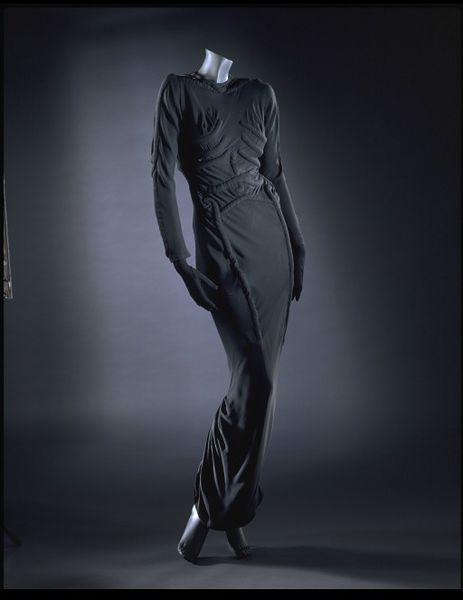
I like to use the technique because of its subtlety and tactility. The play of light on the fabric shows up the design which can be almost invisible in flat lighting and dark colours. Outlining the motifs in contrasting thread helps to make them stand out and you can also use a sheer fabric top layer to create shadow quilting, which I’ve also seen in pre-war pieces.
Art textiles by Ruth Singer using trapunto.
The techniques of trapunto are covered in detail in Fabric Manipulation, 150 Creative Sewing Techniques and a few other books on quilting and manipulated textiles.

